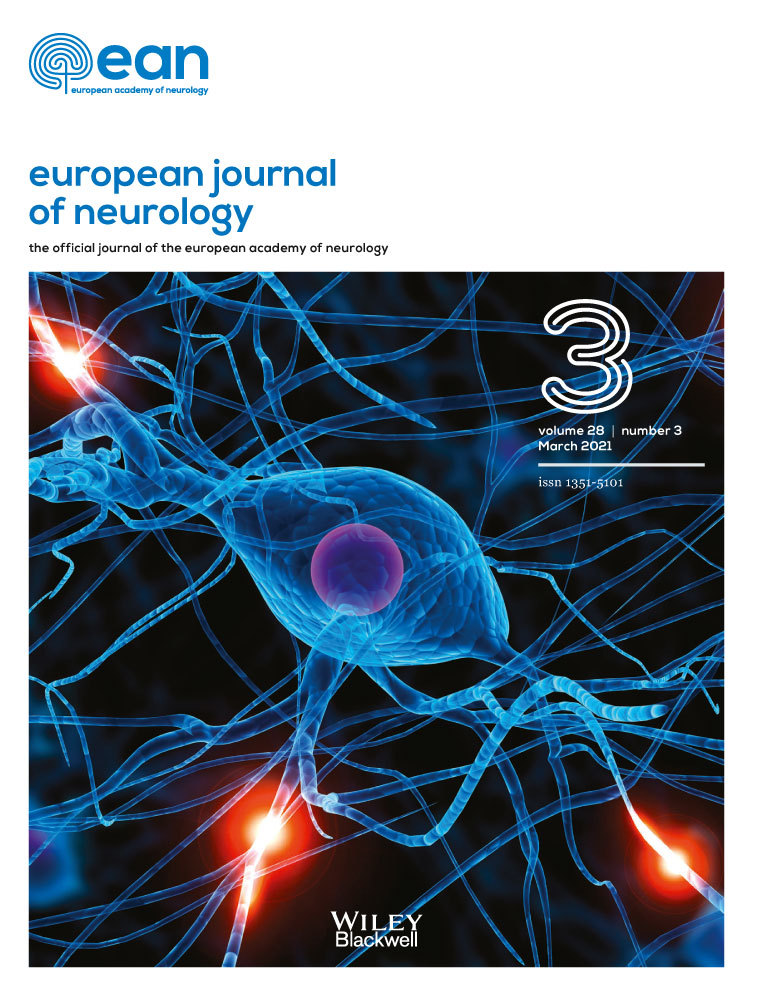Brain metabolic correlates of apathy in amyotrophic lateral sclerosis: An 18F-FDG-positron emission tomography stud
FUNDING INFORMATION
This study was supported by a grant from the Thierry Latran Foundation (INSPIRED project), by the Italian Ministry of Health (Ricerca Sanitaria Finalizzata, grant RF-2016-02362405), the European Commission's Health Seventh Framework Programme (FP7/2007-2013, grant agreement 259867), the Italian Ministry of Education, University and Research (Progetti di Ricerca di Rilevante Interesse Nazionale, PRIN, grant 2017SNW5MB; the Joint Programme-Neurodegenerative Disease Research, Strength and Brain-Mend projects). This study was performed under the Department of Excellence grant of the Italian Ministry of Education, University and Research to the “Rita Levi Montalcini” Department of Neuroscience, University of Turin, Italy. Funding sources had no role in study design and conduct; data collection, management, analysis, and interpretation; preparation, review, approval, and decision to submit the manuscript.
Abstract
Background and purpose
The aim of this study was to evaluate brain metabolic correlates of apathy in amyotrophic lateral sclerosis (ALS).
Methods
A total of 165 ALS patients underwent 18F-2-fluoro-2-deoxy-D-glucose positron emission tomography (18F-FDG-PET) and Frontal Systems Behaviour Scale (FrSBe) evaluation. FrSBe provides “before” and “after” apathy subscores, referring to premorbid and morbid conditions. “After” apathy subscore and “before-after” gap, i.e. the difference between “before” and “after” subscores, were regressed against whole-brain metabolism. Among patients with a pathological “after” apathy subscore (i.e., ≥65), we compared patients with “before” apathy subscores ≥65 and <65, and patients with “before-after” gaps of <22 and ≥22.
Results
In the whole sample, the “after” apathy subscore negatively correlated with metabolism in the dorsolateral prefrontal cortex (DLPFC), dorsomedial prefrontal cortex (DMPFC), ventrolateral prefrontal cortex (VLPFC), premotor cortex (PMC) and anterior cingulate cortex (ACC), and insula bilaterally. A positive correlation was found in the cerebellum and pons. The “before-after” gap negatively correlated with metabolism in bilateral DLPFC, DMPFC and PMC, and left VLPFC and ACC, and positively correlated with cerebellar and pontine clusters. Among patients with an “after” apathy subscore ≥65, we found no difference between those with “before” apathy subscores ≥65 and <65. Patients with a “before-after” gap ≥22, compared to patients with a gap <22, showed relative hypometabolism in bilateral DLPFC and DMPFC, and left ACC and PMC, and relative cerebellar and pontine hypermetabolism.
Conclusion
No studies on brain 18F-2-fluoro-2-deoxy-D-glucose positron emission tomography correlates of apathy have been performed in ALS. We found that FrSBe “after” apathy subscore correlated with metabolic changes in brain regions known as neuroanatomical correlates of apathy. Furthermore, our findings support the relevance of the gap between premorbid and morbid conditions to detect behavioural changes due to the neurodegenerative process underlying ALS.
CONFLICT OF INTEREST
Antonio Canosa, Veria Vacchiano, Fabrizio D'Ovidio, Cristina Moglia, Umberto Manera, Rosario Vasta, Vincenzo Arena, Maurizio Grassano, Francesca Palumbo, Laura Peotta, Barbara Iazzolino and Marco Pagani have no disclosures. Andrea Calvo has received a research grant from Cytokinetics. Rocco Liguori reports personal fees from Biogen, Sanofi-Genzyme, Argon Healthcare s.r.l., Amicus Therapeutics s.r.l. and Alfasigma for Advisory Board consultancy and Lecture fees from Dynamicom Education, SIMG Service, Adnkronos salute unipersonale s.r.l. and DOC Congress s.r.l., outside the submitted work. Adriano Chiò serves on scientific advisory boards for Mitsubishi Tanabe, Roche, Biogen, Cytokinetics and AveXis, and has received a research grant from Italfarmaco. The sponsor organizations had no role in data collection and analysis and did not participate in writing and approving the manuscript. The information reported in the manuscript has never been reported elsewhere.
Open Research
DATA AVAILABILITY STATEMENT
Data are available upon request by interested researchers.




